World Architecture Festival 2014 day two winners announced
World Architecture Festival 2014: an apostrophe-shaped bridge in a British industrial city and a pair of structures at a sustainable forest in Australia feature in the second group of category winners for awards at this year's World Architecture Festival in Singapore (+ slideshow).
World Architecture Festival award winners announced yesterday included a house with trees growing on the rooftops and a library where bookshelves and stairs wrap a triple-height atrium. These projects, along with today's successful designs, will now go on to compete for the titles of World Building of the Year and Future Project of the Year tomorrow.
Dezeen is media partner for both the World Architecture Festival and Inside Festival, at the Marina Bay Sands hotel and conference centre in Singapore.
Scroll down to see today's winning projects:
New and old: Rethinking the Split House by Neri&Hu
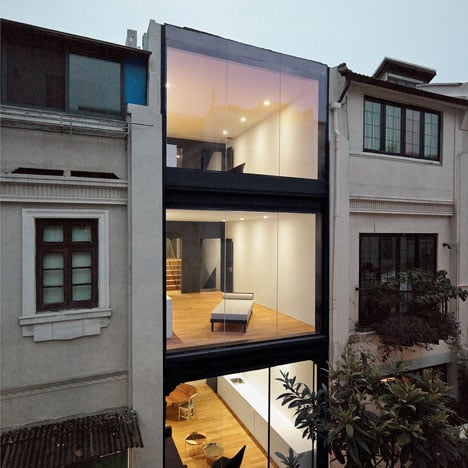
Chinese firm Neri&Hu sliced away the rear wall and replaced it with glass for this renovation of a 1930s townhouse in Shanghai. A bulky metal staircase replaces the timber steps that previously connected the floors and a 45-degree skylight brings daylight in from overhead.
Civic and community: The Chapel by a21studio
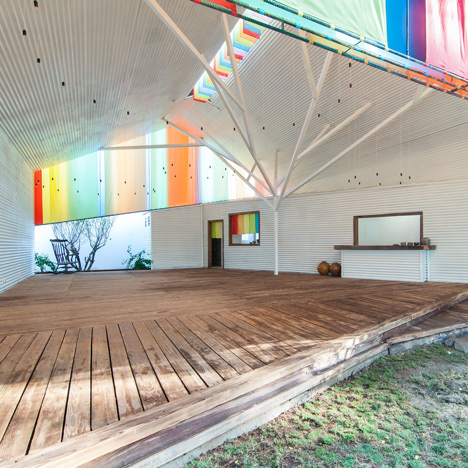
Working to the model of a traditional Vietnamese neighbourhood building, a21studio created this multi-purpose community space in Ho Chi Minh City. The steel frame and metal sheets used to build the structure were leftovers from the owner's previous projects, while printed fabric creates a rainbow of light around the interior.
Culture: Danish Maritime Museum by BIG
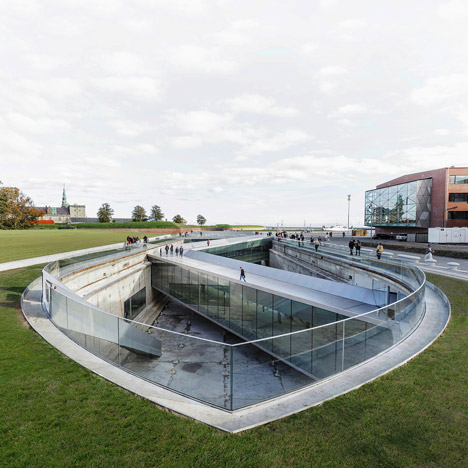
This underground maritime museum by Bjarke Ingels' firm BIG loops around an old dry dock in Helsingør, Denmark. Rather than filling the empty dock, the architects chose to repurpose it as a public courtyard at the centre of the new museum, then added a series of bridges that cut into the 60-year-old walls.
Hotel and leisure: Son La Restaurant by Vo Trong Nghia Architects
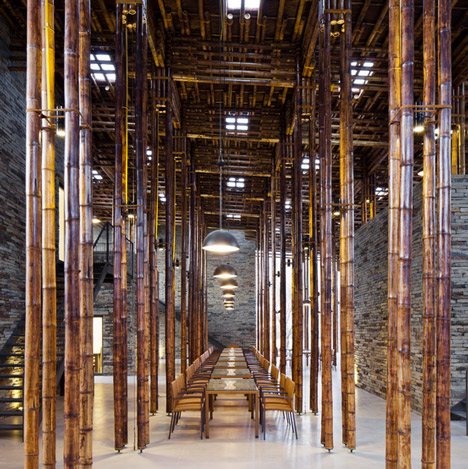
Clusters of bamboo provide the structure for this restaurant designed by Vietnamese firm Vo Trong Nghia Architects in Son La Province. With a pool of water at its entrance, the building also features stone walls and a large thatched roof that connects the common central area with more private spaces along the edges.
Villa: Dune House by Fearon Hay Architects
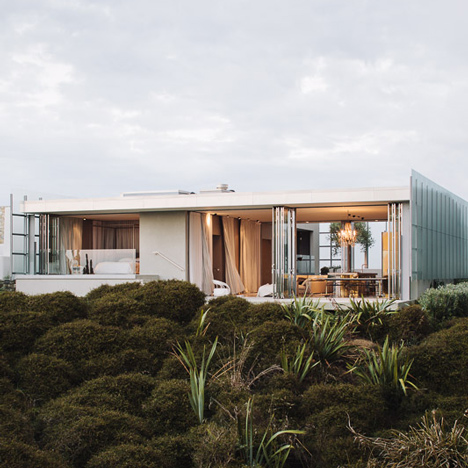
Glazed walls open the spaces of this New Zealand villa out to a courtyard and terrace overlooking the dunes of a nearby beach. Designed by Fearon Hay Architects, the 400-square-metre residence is filled with plants to create a relationship between indoor and outdoor spaces.
Production energy and recycling: Lune de Sang Sheds by CHROFI
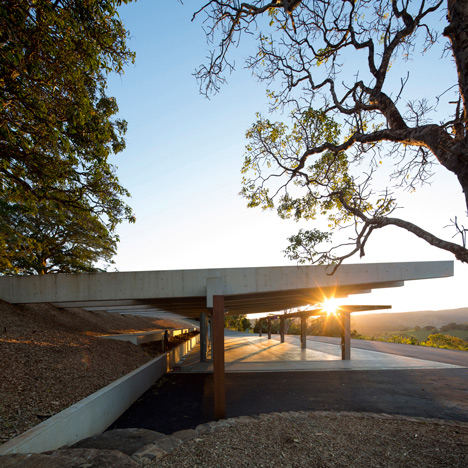
These structures by Australian firm CHROFI provide infrastructure for a former dairy farm property in New South Wales, which has been transformed into a sustainably harvested forest. The buildings are used as both homes and workplaces and were constructed using concrete and stone to offer a sense of permanence.
Transport: Scale Lane Bridge by McDowell+Benedetti
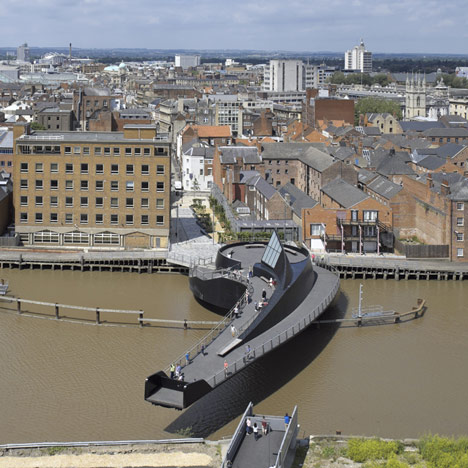
This apostrophe-shaped bridge in Hull, England, was designed by McDowell+Benedetti with a rotating mechanism so it can swing open to make room for passing boats. It spans the river between Hull's Old Town and the as-yet undeveloped industrial land on the east bank, creating a pedestrian route between the city's museums and aquarium.
Health: Chris O'Brien Lifehouse by Rice Daubney
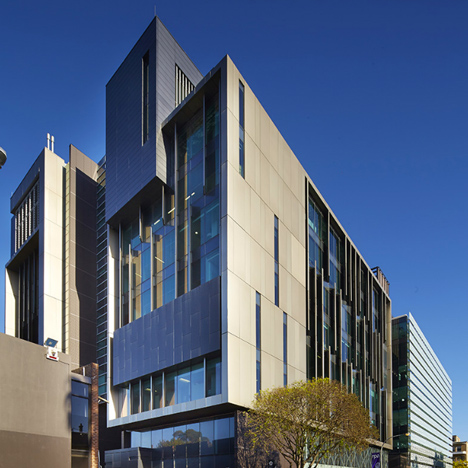
The Chris O'Brien Lifehouse is a cancer-care facility designed by Australian firm Rice Daubney for the RPA hospital campus in Sydney. Glass curtain walls make up the majority of the facades, paired with a clay tile cladding system, while elsewhere anodised metal finishes are accompanied by neutral colours.
Sport: Singapore Sports Hub by Singapore Sports Hub Design Team
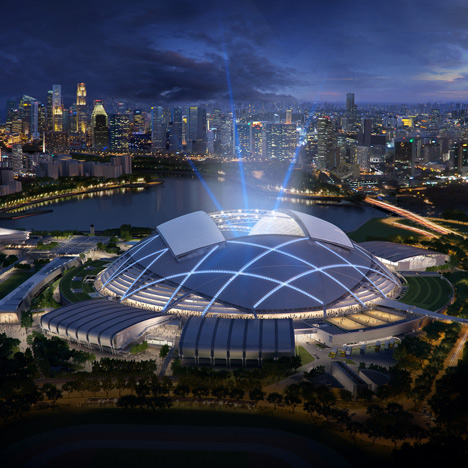
Located on a 35-hectare waterfront site, the Singapore Sports Hub functions as a venue for major sporting events. The stadium's roof has the largest free-spanning dome structure in the world, and can be either open or closed as part of a cooling strategy to suit the tropical climate.
Future Projects:
» Residential: The Village, India, by Sanjay Puri Architects
» Competition entries: Art Gallery of Greater Victoria, Canada by 5468796 Architecture and Number TEN Architectural Group
» Education: FPT Technology Building, Vietnam, by Vo Trong Nghia Architects
» Experimental: Skyfarm, Italy, by Rogers Stirk Harbour + Partners and Arup Associates